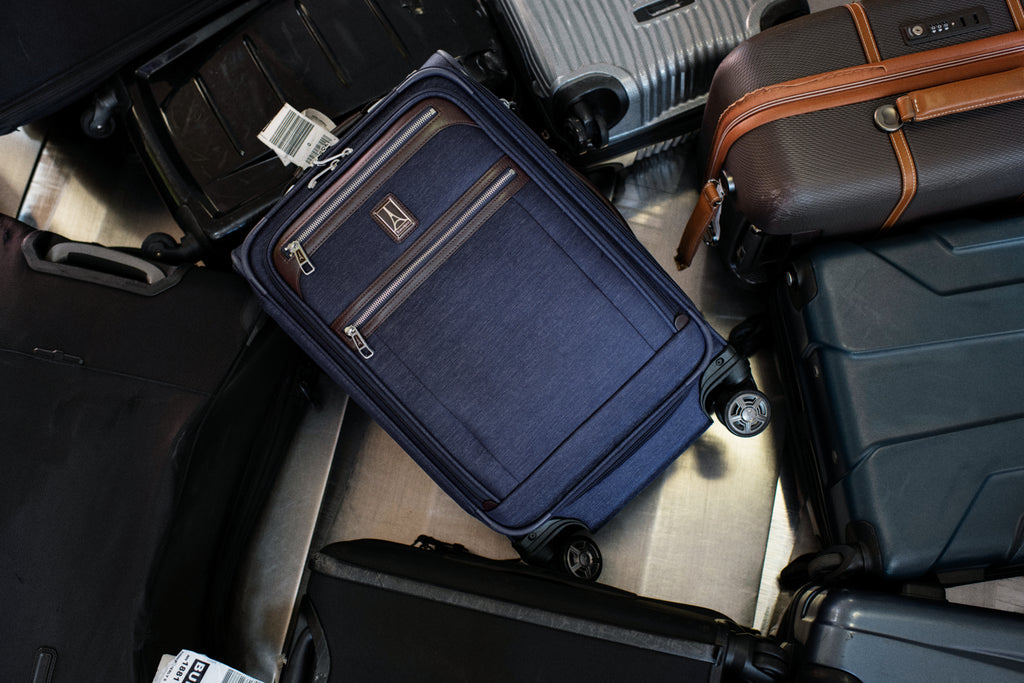A suitcase is a type of luggage, but not all luggage is a suitcase. Suitcases typically have a solid frame and are used for carrying clothing and other items during travel.
On the other hand, luggage is a broader term that encompasses various types of bags and containers used for transporting belongings. This may include suitcases, duffel bags, backpacks, and others, which may have different shapes, sizes, and features. Understanding the differences between luggage and suitcases can help travelers choose the most appropriate bag for their specific needs, whether for business trips, vacations, or other travel purposes.
By considering factors such as size, durability, and convenience, individuals can make informed decisions when selecting the ideal luggage or suitcase for their journeys.
Luggage Vs. Suitcase
Luggage vs. Suitcase: What is the Difference?
When it comes to traveling, one of the most crucial decisions you need to make is choosing the right luggage for your journey. However, with the terms “luggage” and “suitcase” often used interchangeably, it can be easy to confuse the two. So, what exactly sets luggage apart from a suitcase? Let’s dive into it with a clear understanding of their definitions and uses.
Definition And Use
Luggage:
Luggage refers to a generic term for any type of bag or container used for transportation or storage during travel. It encompasses a wide range of items, including suitcases, duffel bags, backpacks, and even large garment bags. The primary function of luggage is to hold personal belongings, clothing, and other essentials needed for a trip.
Suitcase:
A suitcase, on the other hand, is a specific type of luggage that typically consists of a rectangular or square-shaped container with a hinged lid. It is designed primarily for air travel, providing a compact and secure way to pack and transport belongings. The rigid construction of a suitcase ensures protection for fragile items and allows for easy organization with compartments and straps.
Due to its larger size and storage capacity, luggage is commonly used for long trips, vacations, or international travel. It often includes features like wheels, handles, and expandable compartments for convenience during transit. A suitcase, being a specific type of luggage, may be chosen for shorter trips or when travelers need a more structured and organized packing solution.
Physical Characteristics
Luggage:
Luggage comes in various shapes, sizes, and styles. Unlike a suitcase, it doesn’t have a specific design. Luggage can be made from different materials such as leather, fabric, or hard plastic, depending on the user’s preference and requirements.
Some common types of luggage include:
| Type | Description |
| Backpack | A bag carried on the back with two straps |
| Duffel Bag | A cylindrical bag with a top closure and two handles |
| Garment Bag | A long, narrow bag designed to hold hanging clothes |
Suitcase:
A suitcase is typically made from a durable and rigid material such as hard-shell plastic, aluminum, or polycarbonate. It often features a retractable handle for easy mobility and wheels for smooth transportation. The interior of a suitcase usually includes elastic straps or zippered compartments for secure storage, preventing items from shifting during travel.
The distinguishing characteristic of a suitcase is its rectangular shape with a hinged lid. This design allows for optimal space utilization and efficient packing. Suitcases can have different sizes, ranging from small carry-ons to large check-in bags, accommodating various travel needs.
Now that you understand the differences between luggage and a suitcase, you can make an informed decision based on your travel requirements and preferences. So, whether you’re planning a weekend getaway or embarking on a long journey, choose the right travel companion to suit your needs!

Credit: ru.pinterest.com
Durability And Material
When it comes to selecting luggage or a suitcase, considering the durability and the material used in its construction is crucial. The construction material, longevity, and resistance play a significant role in determining the overall quality of the luggage or suitcase.
Construction Material
The construction material of luggage and suitcases varies, with luggage typically being made from a softer material such as fabric or nylon, whereas suitcases often feature a hard shell made from materials like polycarbonate or ABS plastic. The difference in construction material directly impacts the durability and protection provided to the items inside.
Longevity And Resistance
Luggage made from soft materials may offer more flexibility in terms of fitting into tight spaces, but it can be less resistant to wear and tear compared to hard shell suitcases. On the other hand, suitcases with hard shells are generally more durable and resistant to scratches, making them ideal for frequent travelers.
Design And Features
In understanding the difference between luggage and a suitcase, it’s crucial to assess their design and features. While both serve the purpose of carrying belongings during travel, they have distinctive characteristics that set them apart.
Size And Shape
One of the key differences in the design of luggage and a suitcase lies in their size and shape.
Additional Features
When examining the features, it’s evident that both luggage and suitcases offer unique functionalities to cater to different travel needs.

Credit: www.differencebetween.com
Transportation And Portability
When it comes to choosing the right travel gear, understanding the difference between luggage and a suitcase is essential. One of the key aspects to consider is transportation and portability. How easy is it to move your belongings from one place to another? Let’s delve into the details and explore the factors that contribute to transportation and portability.
Handles And Wheels
Handles and wheels play a crucial role in the ease of transporting your travel essentials. Suitcases typically come equipped with retractable handles and wheels, providing convenience during your journeys. Simply extend the handle, and effortlessly wheel your suitcase alongside you, be it through busy airport terminals or crowded streets.
Luggage, on the other hand, often lacks built-in wheels and handles. Instead, it usually features straps or handles that require you to carry the bag by hand or over your shoulder. While this can be manageable for shorter distances, it may become increasingly tiring and inconvenient if you have a substantial amount of luggage to transport.
Having handles and wheels in a suitcase allows for greater mobility and easier navigation, especially in situations where you might have to rush or cover long distances. Plus, it relieves the strain on your body and provides extra comfort during your travels.
Weight And Maneuverability
Weight and maneuverability are two more aspects to consider when comparing luggage and suitcases. Suitcases are designed with lightweight materials, allowing you to pack more while still meeting airline weight restrictions. The lightweight construction enables easier movement and maneuverability, giving you the freedom to navigate through tight spaces or crowded areas without feeling weighed down.
Luggage, on the other hand, often tends to be bulkier and heavier due to its construction and lack of wheels. This can make it challenging to handle and maneuver, especially if you have multiple bags or if you’re traveling alone. Dragging heavy luggage can quickly become a strenuous task, causing discomfort and fatigue.
With suitcases’ lighter weight and improved maneuverability, you can glide effortlessly through your travel adventures. A lightweight suitcase not only allows for easier transportation but also helps prevent unnecessary strain on your body, making your journey more enjoyable.
In summary, suitcases are designed with transportation and portability in mind, providing features like handles and wheels, lightweight construction, and improved maneuverability. These factors make suitcases a preferred choice for travelers seeking convenience, comfort, and ease of movement. So, when preparing for your next trip, carefully consider these aspects to choose the travel gear that best suits your needs, ensuring a seamless travel experience.
Price And Accessibility
When comparing luggage and suitcases, it’s crucial to consider their price and accessibility.
Cost Variance
Luggage tends to have higher cost variance due to a wide range of sizes, materials, and brands.
Availability And Options
Suitcases typically offer greater availability and options in terms of styles, colors, and features.

Credit: travelpro.com
Frequently Asked Questions On What Is The Difference Between Luggage And A Suitcase
Are Luggage And Suitcases Interchangeable Terms?
Yes, although often used interchangeably, luggage refers to all types of bags or containers for travel goods, while a suitcase specifically refers to a rectangular container for clothes and belongings.
What Are The Key Differences Between Luggage And Suitcases?
Luggage encompasses a broader range of travel bags such as backpacks and duffel bags, whereas suitcases typically have a rectangular shape and are used for carrying clothes during travel.
How Can I Choose Between Luggage And Suitcases For Travel?
Consider the type of travel, duration, and personal preferences. Suitcases are ideal for longer trips with structured packing needs, while luggage offers more versatility for various travel styles.
Conclusion
The key difference between luggage and a suitcase lies in their design and functionality. While luggage refers to a broad category encompassing various types of bags used for traveling, a suitcase specifically refers to a rectangular-shaped bag with a handle and wheels.
Understanding this distinction can help travelers make informed choices based on their specific needs and preferences. So, next time you’re planning a trip, consider whether you need luggage or a suitcase to make your journey more convenient.




